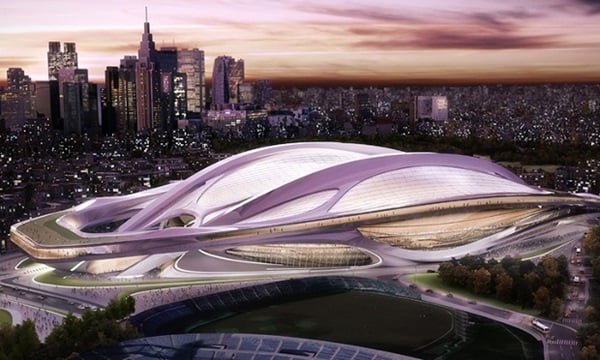
Architect Zaha Hadid is no stranger to controversy, but her design for the Tokyo Olympic stadium has generated exceptional opposition.
Earlier this fall, a group of Japanese architects led by starchitect Arata Isozaki launched a well-publicized attack on Hadid’s competition-winning design.
Well-known architects such as Toyo Ito and Fumhiko Maki joined the fray.
The Iraqi-born, London-based Hadid’s futuristic design features the fluid, curving lines and intertwining forms for which she is known.
Isozaki, however, was not impressed by the designs and models of the stadium he saw at a Zaha Hadid exhibition at the Tokyo Opera City Art Gallery (on view through December 23). To him the design resembles “a dull, slow form, like a turtle waiting for Japan to sink so that it can swim away.”
The massive structure, planned as the centerpiece of the Olympic Games to be held in Tokyo in 2020, will be a “a monumental mistake” and “a disgrace to future generations,” the 83-year-old Isozaki decried in an open letter to the Japan Sports Council.
Also stoking the outrage is the project’s budget, which was initially estimated at $2.8 billion, but was recently reduced to $1.5 billion.
As reported in The Guardian and elsewhere, Hadid, an architect diva if ever there was one, is now finally fighting back, coming out with some searing counterattacks in the press.
“I think it’s embarrassing for them,” Hadid said of her detractors in a recent interview with Dezeen magazine. “I understand it’s their town. But they’re hypocrites,” she blasted. “They don’t want a foreigner to build in Tokyo for a national stadium. . . . On the other hand, they all have work abroad.”
Hadid beat out a number of well-known Japanese architects in the stadium design composition. “The fact that they lost is their problem,” Hadid says.
She told the press that she is saddened by the comments from her fellow professionals. “Many of them were friends of mine, actually the ones which I supported before, like Toyo Ito, who I worked with on a project in London. I’ve known him for a long time.”